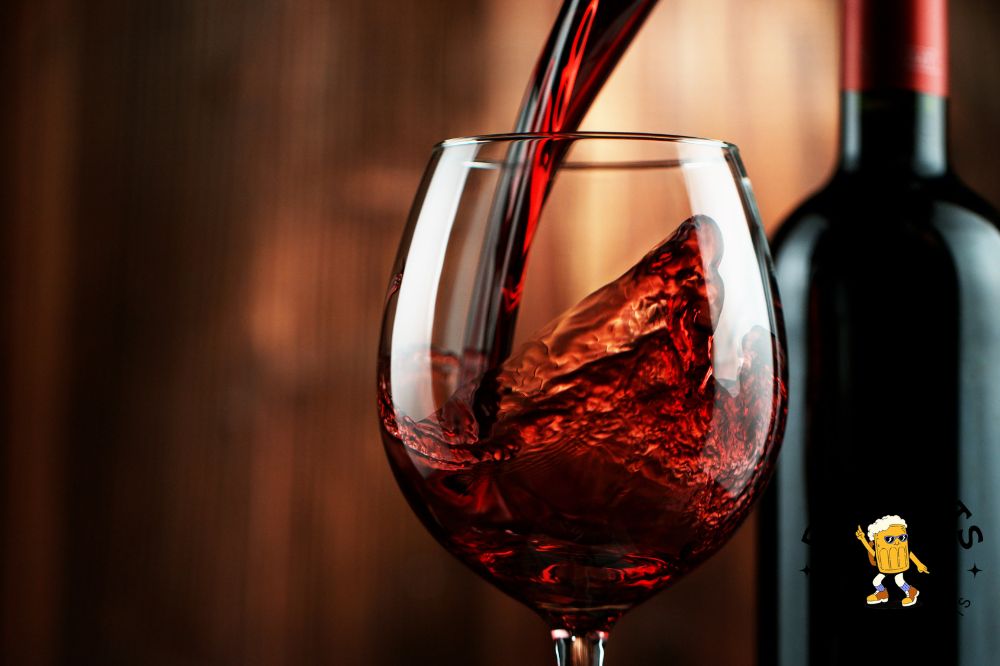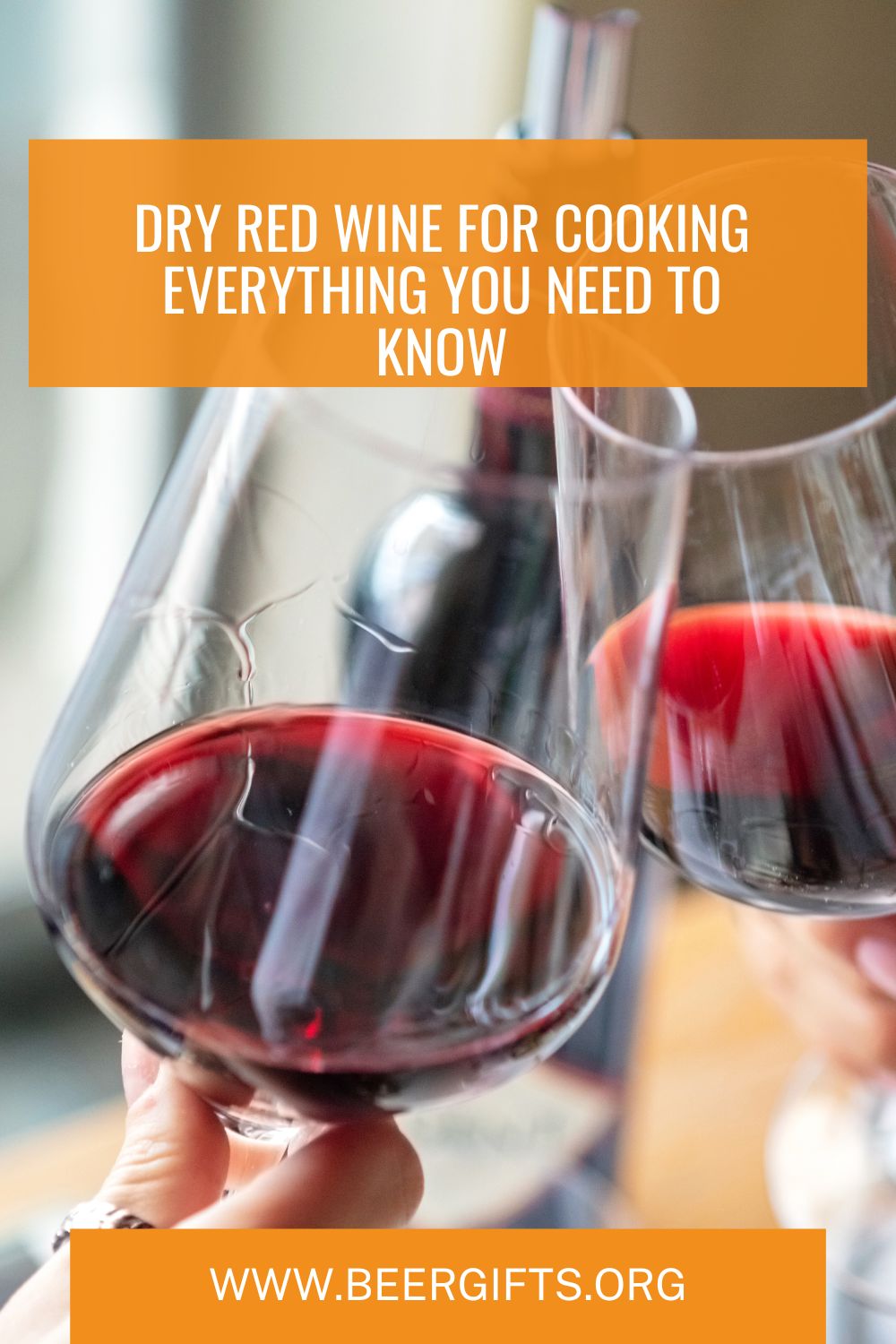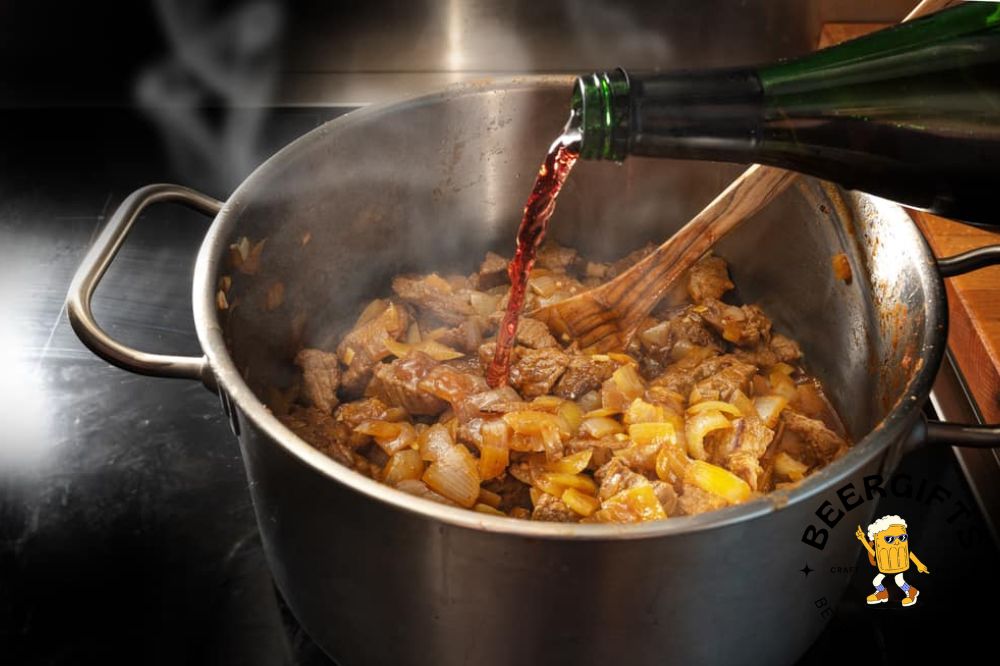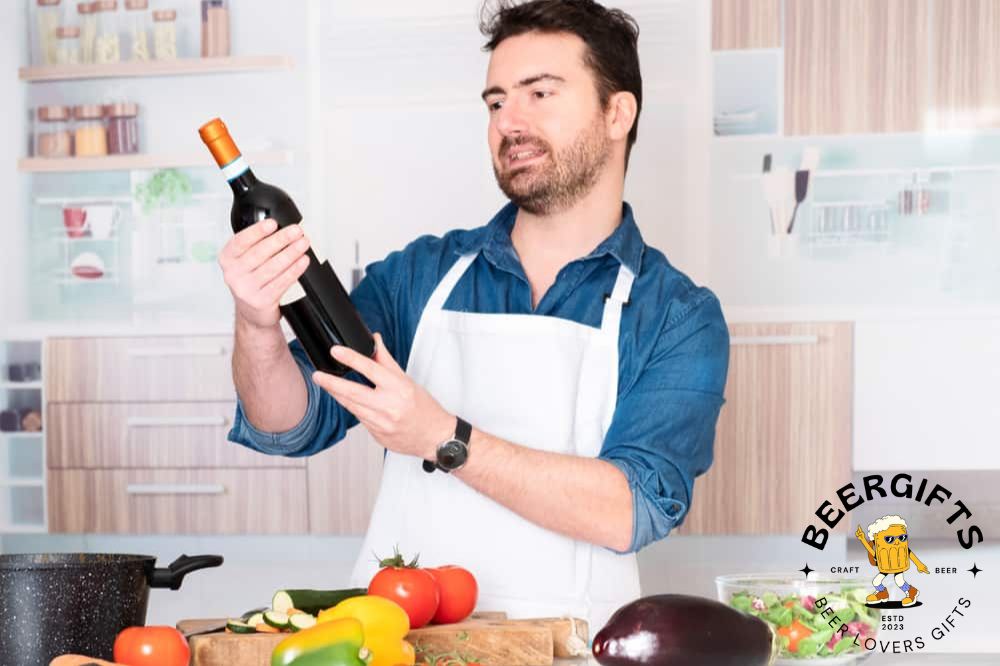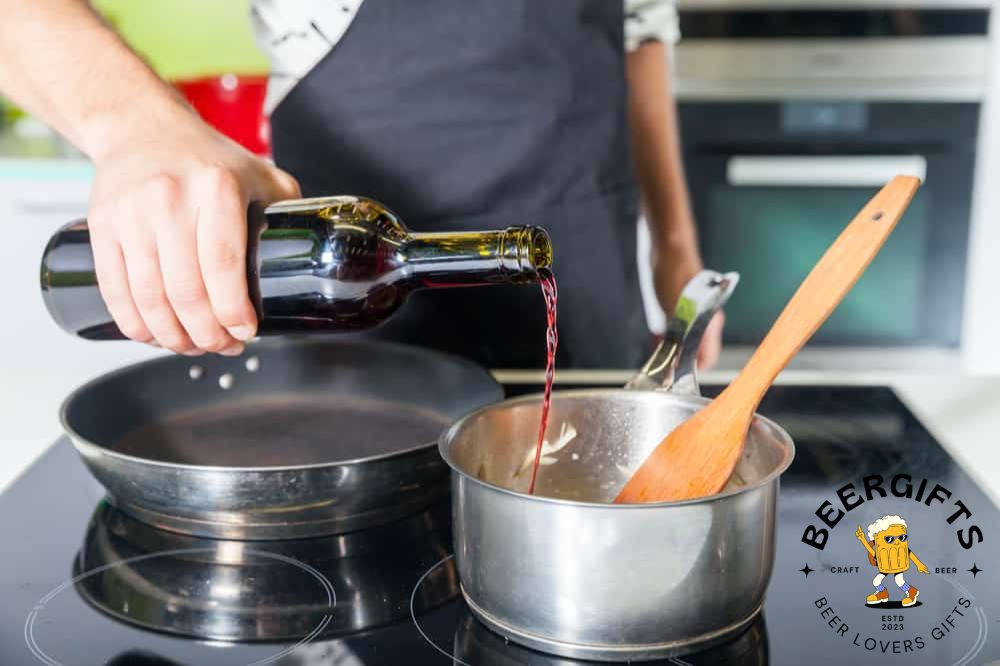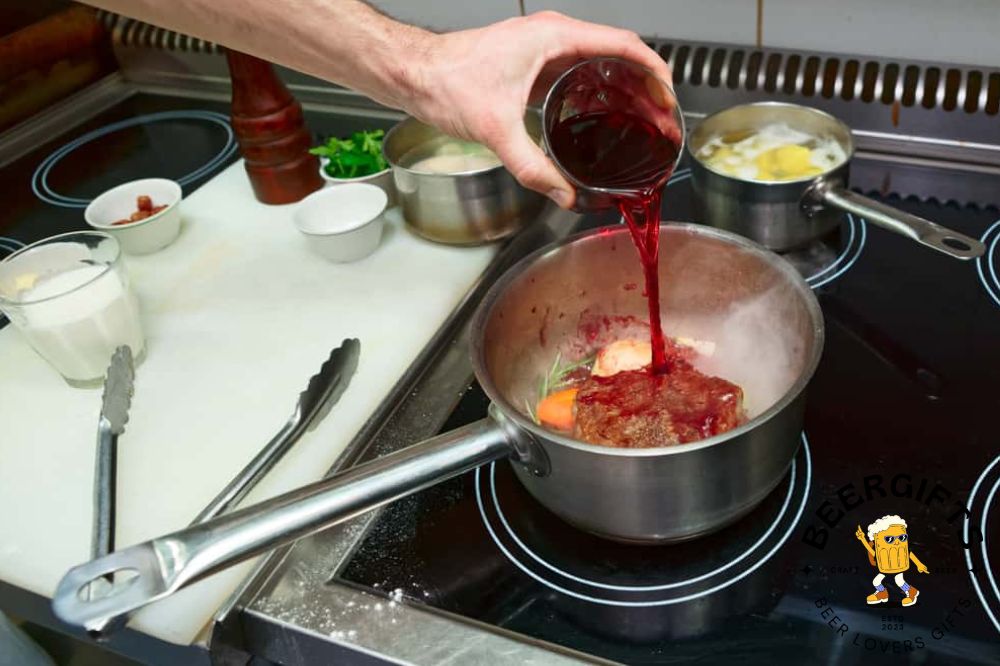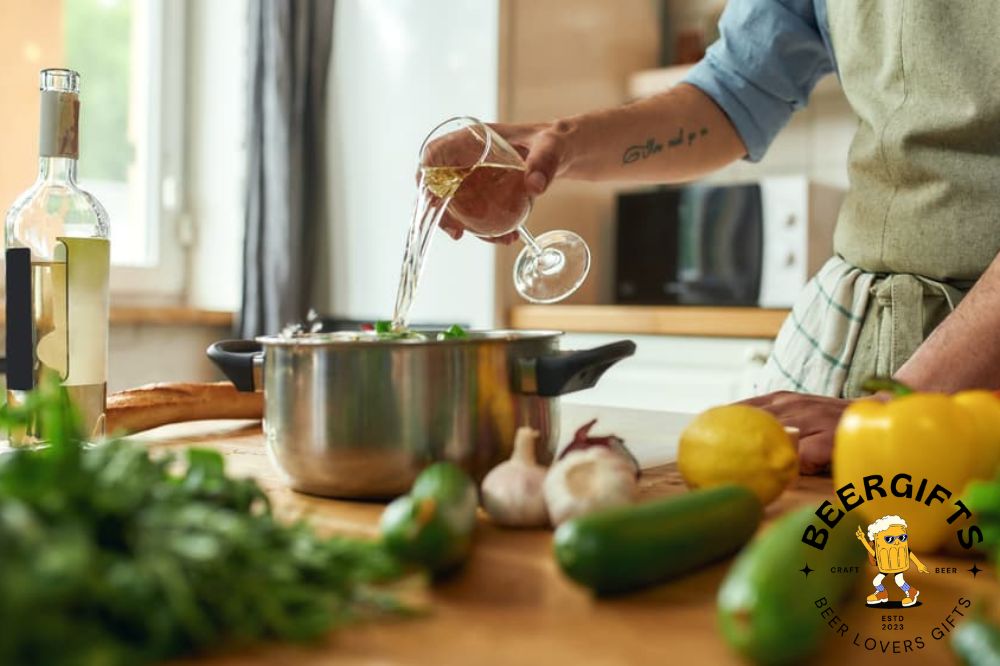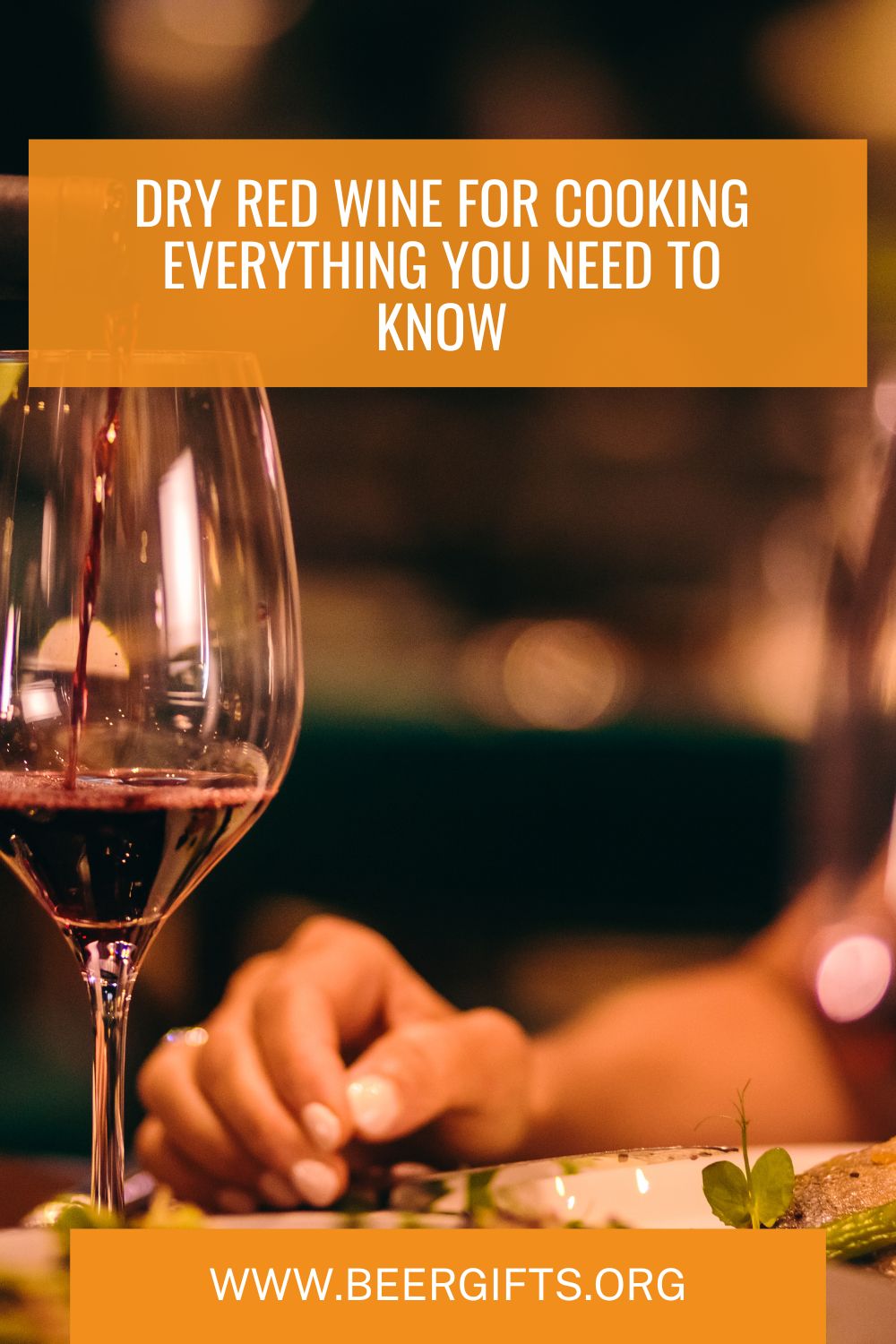As anyone who knows their way around a kitchen will tell you, wine is an ingredient that can enhance a dish immensely. However, it needs to be done right, and tipping in a glass or two of the wrong wine can ruin a dish just as quickly as the right one can elevate it.
To help you understand the basics, in this post we talk about the theory and practice, telling you everything you need to know about using dry red wine for cooking.
Cooking with wine – an overview
Wine has been produced for thousands of years, and people have probably known for almost as long that it’s the ideal accompaniment for a meal, complementing the food and even heightening the flavors.
Since wine goes well with all kinds of food, it’s only logical that it makes an excellent ingredient. Just like when you drink it, in cooking, it enhances other flavors in a dish as well as imparting extra levels of richness and complexity.
Wine can be used as an ingredient in a wide variety of dishes. Often, it is used in slow cooking with meat or stews, and it is an essential ingredient in dishes like coq au vin – which translates as ‘cock (rooster) in wine’.
Alternatively, it can be used for deglazing pans to make sauces, and sometimes it can also be added to a dish shortly before serving to give it an extra lift.
However, the first thing to understand about cooking with wine is that not all wines are the same, and adding one type will have a completely different effect to using another.
There are innumerable styles of wine, and just as certain wines pair well with different dishes, so different types of wine are suitable for cooking certain recipes.
For example, some dishes call for a crisp, fresh white while others are enhanced by the addition of a sweet fortified wine.
The most common wine for cooking, though, is dry red – but even this encompasses a wide range of wines with different profiles. This means choosing the right one for your dish can be the difference between creating a memorable dinner and serving an inedible mess.
In a moment, we’ll talk in detail about selecting the right wines for cooking, but before we get to that, first, let’s start by discussing what to avoid.
What to avoid when cooking with wine
Knowing what to avoid is simpler than understanding which wines will work best in your dish, and at the top of the list of what not to use is “cooking wine”.
The stuff labeled as cooking wine in groceries stores is usually a mix of sub-standard wines – meaning ones that aren’t fit for drinking – usually mixed with salt.
Sometimes, they are alcohol-free, and often, if you tried to drink one, it would taste more like a glass of vinegar.
When you cook with wine, its inherent flavors become more pronounced, so using vinegary cooking wine is nothing more than a shortcut to ruining your meal. So don’t do it!
Similarly don’t be tempted to use old wine. Sometimes, people imagine that pouring a bottle of wine that’s been open for a week or two into the pan is a great way of using it up. However, again, don’t be tempted.
If the wine is too old to drink, it’s too old for cooking. The flavors of stale wine that make it unpleasant to drink will show up even more powerfully in your dish, so rather than pour it into your pot, pour it down the sink and use something else.
The same goes for bad wine. In fact, a simple rule when cooking with wine is that if you wouldn’t drink it, you shouldn’t cook with it.
You’ll rarely need a whole bottle for a recipe, and it’s one of life’s great pleasures to drink a glass of red while cooking – so choose one you’ll enjoy.
That said, don’t use expensive “fine” wine for cooking either. The subtleties and nuances of high-quality wine will be lost in the pot, so don’t waste anything too good. Something in the $10-20 range is just about right.
Guidelines for choosing wine for cooking
So now we know what not to use, let’s think about which wines to choose for cooking.
As we just mentioned, the flavors of the wine you add to your cooking will also show up in the finished dish – but even more so because the process of cooking concentrates those flavors and makes them more pronounced.
For this reason, you should think about which flavors you want in the dish when it’s done.
If in doubt, a good place to start is the kind of wine that would go well with the meal. If the flavors and profile of a wine would pair well with the dish you are cooking, there’s a good chance the wine would work well as an ingredient too.
For example, if you are preparing a heavy, hearty meal like meat stew, you would probably serve it with the kind of full-bodied red that can hold its own alongside the strong, rich flavors. In this case, this is the type of wine that would work well cooked into the dish.
On the other hand, if you’re cooking a dish with lighter flavors like a tomato-based sauce for pasta, you would probably serve it with something lighter and fruitier like a pinot noir or a chianti. This means these are also the kinds of wines to pick for the sauce.
If you think about it, this is logical since the flavors of a wine that make it suitable for drinking with a dish will also be present when cooked into the dish, creating richer, more complex levels of taste.
Another saying that’s worth remembering is “what grows together, goes together”, which means that wine from the same region as a dish is usually suitable for cooking that dish.
However, this is not always true, so use your common sense to decide whether this adage applies.
How do the different components of red wine affect a dish?
When you add wine to the food you are cooking, the flavors of the wine become more pronounced and more intense, so often, fruitier wines are often preferred.
This is because the fruit flavors are released into the food as it cooks, and those fruity notes blend with the other flavors of the dish.
The other main flavor of wine that shows up in the food is acidity, so this is something to pay attention to.
It depends on the type of dish you are cooking and your desired results, but be careful about choosing a wine that is too acidic because if the dish you are preparing is too light for the tartness, it may end up tasting sour or bitter.
Another important element of red wine is tannins. Tannins are what make you pucker your mouth when you drink a heavy, tannic red, and this is not something you want an excess of in your final dish.
However, tannins act as a natural meat tenderizer, so often, a certain amount is desirable. This is another point to remember when choosing which wine to cook with.
Finally, wines that have been aged in barrels are often not suitable since those woody notes may become too overpowering when amplified by being cooked into a meal.
At the same time, this depends on what you are cooking, and a heavy meat stew may be able to hold the strong flavors from this kind of wine.
Which Dry Red wines to choose for which dishes
Now we’ve covered the basics, it’s time to look at some of the most popular dry reds for cooking – and the kind of dishes they work well in.
1. Merlot
Merlot is an easy-drinking, fruity wine that’s a good place to start for those who are just learning to appreciate wine.
Due to their fruitiness and their relatively low tannin content, they are also a safe and forgiving wine to cook with for people without much experience.
You can use merlot when reducing pan sauces for a tangy flavor and a juicy, jammy texture. Lighter-bodied merlots are ideal for chicken dishes while fuller—bodies versions work well with meats like ribs, beef or lamb.
2. Pinot Noir
Like merlot, pinot noir is a smooth wine, often with a tart but not overpowering acidity. These wines are usually light or medium-bodied and are a versatile ingredient to cook with, working well with lighter meats like pork as well as richer types like duck.
Pinot noir can also produce exceptional results when used to cook fish like salmon or other seafood.
Pinot noirs do an excellent job of tenderizing fatty meat, so adding one to a slow-cooked stew can produce spectacular results. However, be careful of using barrel-aged pinot noirs since you may find the woody notes too prominent in your final dish.
3. Chianti
A great example of the adage about wines and food from the same regions working together, chiantis are fruity, earthy and sometimes peppery wines that are ideal for pasta sauces.
You can also use chianti for pan sauces, but these wines are too delicate for heavy, hearty dishes like stew.
4. Sangiovese
Sangiovese refers to the main grape variety used in chianti, and although they can be less complex than a well-rounded chianti, they can work well in the same kind of dishes you would usually turn to a chianti for when cooking.
5. Cabernet sauvignon
If merlot is a beginner’s wine, cabernet sauvignon is one for more developed palates. These are big, bold wines with plenty of character – and they are the kind of dry reds to opt for when cooking dishes with powerful, intense flavors.
Use cabernet sauvignon when cooking meat stews since they will produce a complex mix of deep, rich flavors. The tannins in cabernet sauvignon also do an exceptional job of tenderizing meat, and when done right can create the kind of meat that almost melts in your mouth.
6. Shiraz
Some people may tell you to avoid shiraz for cooking because of its tannic nature. However, they can be used to good effect for stronger meats like beef or game.
7. Zinfandel
Like shiraz, be careful when cooking with zinfandel because of the high tannin content. However, feel free to experiment with stronger meat dishes like brisket or leg of lamb.
How to cook with wine – tips and suggestions
To finish, here are some suggestions that will help you get off to the best start when cooking with wine for the first time.
In general, the wine should go into the dish early to allow the flavors to blend with the other flavors present. If you can taste the wine distinctly as an individual flavor, it means the dish needs further cooking.
That said, a dash of wine added near the end of cooking can have the effect of giving certain dishes a lift just before serving.
When cooking with wine, you should cook slowly. When wine is cooked quickly, it produces a completely different flavor profile than when it is given time to develop, so this is not something to rush.
Finally, above all, add the wine slowly to your dish and keep tasting as you cook. Remember, you can always add more until you achieve the desired result – but you can’t take it out once it’s in, so make sure you don’t pour in too much and then regret it after!
Understand the basics and experiment
Finding the perfect red wine for a dish can be challenging, but we can boil the most important advice down to a few simple words: don’t use a wine for cooking that you wouldn’t drink and choose a wine that would pair well with the dish you’re cooking.
After that, remember that the flavors present in the wine will become more pronounced when you cook with it, so think about the flavors you want and choose your wine accordingly. After that, it’s up to you to experiment, and that part should be a lot of fun!

